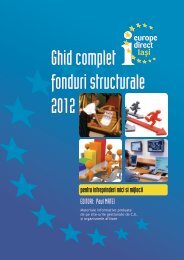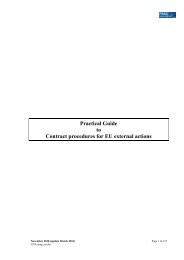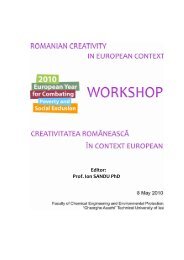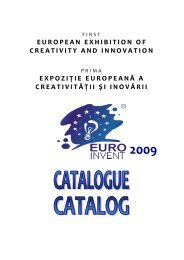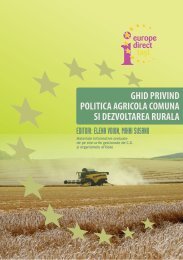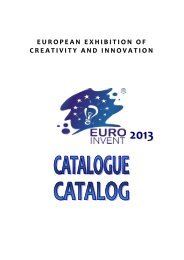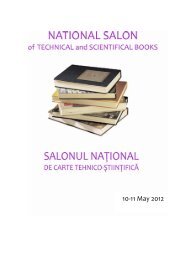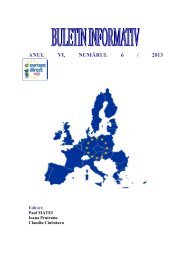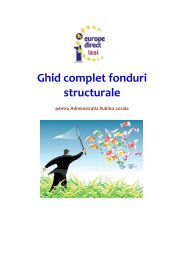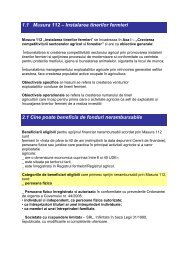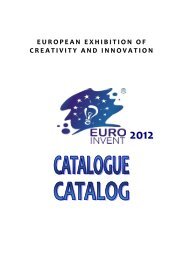2011 - Europe Direct Iasi
2011 - Europe Direct Iasi
2011 - Europe Direct Iasi
Create successful ePaper yourself
Turn your PDF publications into a flip-book with our unique Google optimized e-Paper software.
EUROINVENT <strong>2011</strong><br />
CLASS 7<br />
Buildings and Materials<br />
7.1.<br />
Title Carrier photostructurable of information<br />
Stefan Robu, Ludmila Vlad, Alexandru Prisacari, Elena<br />
Authors<br />
Achimova<br />
Institution Moldova State University<br />
Patent no. Patent No. MD-352Y<br />
A new photostructurable carrier of information it was<br />
elaborated from copolymers of 9-carabazolylmethyltiiran<br />
Description with butyrate of glicydyl designated for registering<br />
holograms with argon laser λ=510 nm with a diffraction<br />
efficiency of 1,5÷2,0 times higher than those known in the<br />
related literature and achieving up to 40 %.<br />
7.2.<br />
Title<br />
Authors<br />
Institution<br />
Patent no.<br />
Description<br />
Process and composite material for producing the<br />
retension aprons in centrifugal crushers<br />
Victor GEANTĂ, Ionelia VOICULESCU, Radu<br />
ŞTEFĂNOIU, Horia BINCHICIU, Radu Mihai NEGRIU<br />
SC SUDOTIM AS SRL Timişoara<br />
SC ECONET PROD SRL Bucureşti<br />
Patent Number RO125587-A0 / No. OSIM – A-<br />
00012/11.01.2010<br />
The Manufacturing Process of the composite metal<br />
material being used for producing the retention aprons in<br />
the centrifugal rotary crushers is characterized by the fact<br />
that a mixture of hard metallic carbides (with W, Ti etc.)<br />
and fused tungsten carbide, mechanically-milled and<br />
selected, are infiltrated inside a metal matrix based on Fe,<br />
Co or Ni.<br />
The Infiltration Metal Matrix, based on Fe, comprises<br />
carbide generating elements.<br />
The Composite Metal Material is made from a mixture<br />
of hard metallic carbides (with W, Ti etc.), mechanicallymilled<br />
and selected and tungsten carbide, milled and<br />
melted, with a granulation of 200 – 1500 μm, infiltrated<br />
Class 7<br />
101<br />
7



